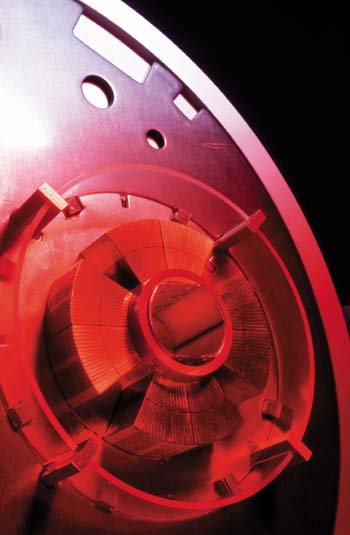Author
Array
(
[0] => linkedin
[1] => facebook
[2] => twitter
[3] => google-plus
[4] => youtube
)
Array
(
[0] => linkedin
[1] => facebook
[2] => twitter
[3] => google-plus
[4] => youtube
)
Array
(
[0] => linkedin
[1] => facebook
[2] => twitter
[3] => google-plus
[4] => youtube
)
Array
(
[0] => linkedin
[1] => facebook
[2] => twitter
[3] => google-plus
[4] => youtube
)
Array
(
[0] => linkedin
[1] => facebook
[2] => twitter
[3] => google-plus
[4] => youtube
)
No Author
Author archive

Examples of lost data include the results of heavy-ion experiments at the Bevelac accelerator at Berkeley. The accelerator stopped running in 1993 but much of the data – which are relevant to research into solar neutrinos, nucleosynthesis and cosmic rays – was never published in any form. “Scientists will have to wait decades before these […]

A conducting fluid needs to have a small ‘seed’ magnetic field before it can generate a self- sustaining field. The seed field induces electric currents in the fluid that in turn create a more powerful, and stable, magnetic field. This creation of the field relies on a positive feedback mechanism. However, the process only works […]

The quantum dot device consists of a transistor made of different layers of gallium arsenide and aluminium gallium arsenide. One of the layers consists entirely of quantum dots just nanometers across. The quantum dots are extremely sensitive to photons. A photon hitting the detector liberates an electron trapped in the one of the dots. A […]

“When I helped create PhysicsWeb nearly three years ago, I was sure that it would be a successful site. However, sites such as PhysicsWeb do not rely solely on one individual, and I would like to thank Lloyd Fletcher, James Counihan, Martin Kelly, Chris Brown and all the Physics World editorial team for their support […]

On Earth, convection or thermal diffusion dominates heat transfer. But these effects are extremely weak in zero gravity, and adiabatic compression can dominate. To observe local overheating and adiabatic compression, Régis Wunenburger from the University of Bordeaux and colleagues placed a small cylinder containing sulfur hexafluoride (SF6) in both its liquid and gas forms on […]
 Read article: ‘The Quantum Project’ hits the Web
Read article: ‘The Quantum Project’ hits the Web
The 32-minute film can be downloaded from Sightsound.com. Viewers are charged $3.95 to view it for up to five days, with a higher charge for permanent downloads. The film’s makers, Metafilmics, are hailing The Quantum Project as “every bit as groundbreaking as The Jazz Singer“, the first film to include speech. “We feel this is […]

Polymer films are used in to make many mass-produced products, such as compact discs. It has been known for some time that the flow rate of liquid polymers can become irregular during the manufacturing process, despite the slow fluid speeds involved. This was surprising because these slow speeds should reduce the effects of inertia, and […]

Measurement is at the heart of physics. As physical quantities have been measured with greater and greater accuracy, our knowledge of the world has improved. This applies equally to measurements on the subatomic and intergalactic scales, although the relative error bars are very different. The Planck constant is known to an accuracy of one part […]
 Read article: Physics and archaeology
Read article: Physics and archaeology
Physics-based techniques play a crucial role in helping archaeologists to unravel the history of our ancestors' lives and reveal previously undiscovered sites without the need to excavate
 Read article: CERN prepares for the LHC and beyond
Read article: CERN prepares for the LHC and beyond
The phrase "needle in a haystack" is often used to describe CERN
Copyright © 2025 by IOP Publishing Ltd and individual contributors



